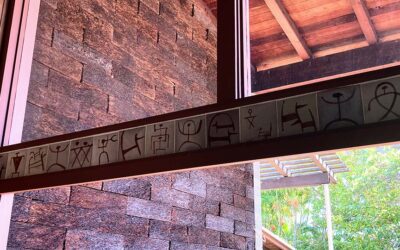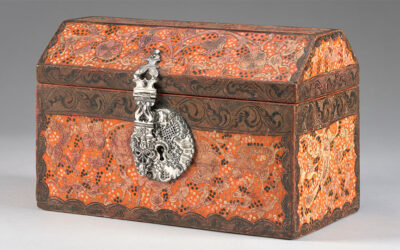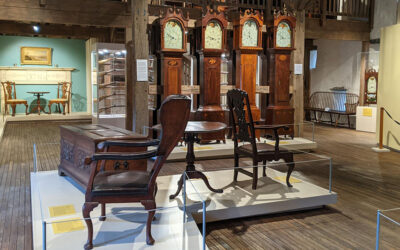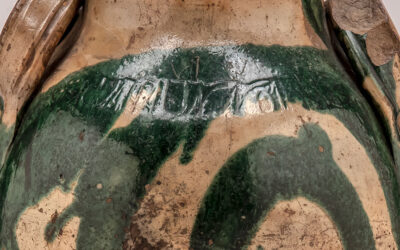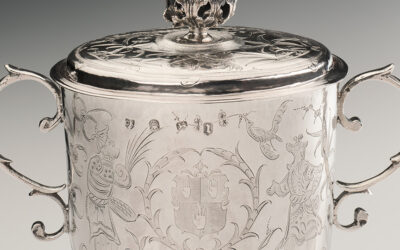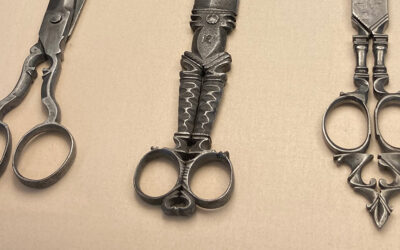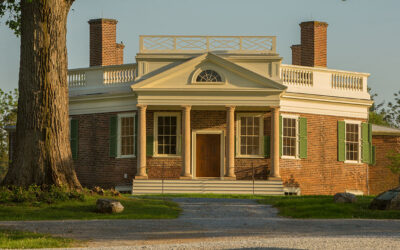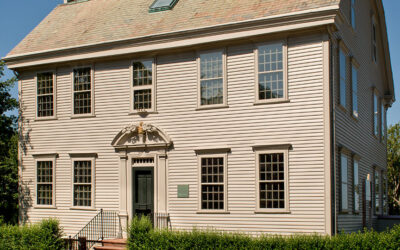NEW RESEARCH
In addition to the Decorative Arts Trust’s support of scholarship through the Emerging Scholars Program, we eagerly promote the research, exhibitions, and projects undertaken by colleagues at museums around the country in our member magazine, The Magazine of the Decorative Arts Trust. We invite you to enjoy the online versions of magazine articles featured below.
See more stories about recent research in The Decorative Arts Trust Bulletin.
18th-Century Marine Imagery in the Sèvres Archive
BY ALYSE MULLER
A Decorative Arts Trust Research Grant provided the opportunity to conduct essential research at the Sèvres manufactory archive in Paris. My dissertation reconsiders the marine genre within a variety of mediums to explore the nexus of maritime commerce, political aspirations, iconography, and aesthetics.
Jean and Zohmah Charlot’s House: A Modernist Space Referencing Enduring Cultural Traditions
BY OLIVIA ARMANDROFF
Located in Honolulu’s Kāhala neighborhood, in close proximity to the shoreline, Jean and Zohmah Charlot’s house has a modest footprint and understated design that speak to a different era.
The Material World of the Spanish Colonial Estrado
BY JORGE F. RIVAS PÉREZ
Sometimes a separate room or a sectioned-off portion of a reception room, the estrado was the most important feminine space in elite Spanish homes.
Completing the Picture: New Research into Craft, Slavery, and Servitude in Early Lancaster
BY BETHANY MCGLYN
The “Completing the Picture: Slavery and Servitude in Early Lancaster County” initiative seeks to research and reinterpret objects and spaces at Historic Rock Ford and the John J. Snyder Jr. Gallery of Early Lancaster Decorative Arts in order to more fully explore the complex histories of those who made and used them.
Made for Use: The Pottery of C.A. Haun
BY RILEY KATE RICHARDS
Christopher Alexander Haun produced uniquely decorated utilitarian earthenware pottery until his death in 1861 and is currently a semi-canonical figure in the study of Tennessee decorative arts.
Chinese Metalwork and English Restoration Silver in the “Chinese Taste”
BY SUSAN EBERHARD
In the history of English Restoration silver, the “Chinese taste” is understood as a type of Chinoiserie—that is, an idealized imagery of China created by Europeans—in vogue from about 1675 to 1720.
Exploring Luxury Scissors as Works of Art in the Early Modern World
BY CLAIRE SABITT
Although scissors as tools appear at least as early as 2,000 BCE, the first evidence for luxury scissors dates to the late 15th century. By the 19th century, decorative scissors became more widespread, especially in England and France.
Jefferson’s Retirement Masterpiece: Restoring Poplar Forest
BY TRAVIS MACDONALD
The long, slow restoration of Poplar Forest has been an ambitious undertaking, and in 2023 we celebrate the completion of that 32-year journey.
A Life Full of Art: Collections and Connections at Cranbrook’s Smith House
BY NINA BLOMFIELD
The Decorative Arts Trust Marie Zimmermann Resident Collections Fellowship has been an incredibly valuable opportunity to grow as a scholar and museum professional.
A New Vision for Newport’s Hunter House
BY LESLIE B. JONES, NICOLE J. WILLIAMS, AND MARYKATE SMOLENSKI
The Preservation Society of Newport County reopened its landmark colonial property Hunter House with a new guide-led tour that highlights the experiences of the home’s many occupants, including generations of prosperous merchants and enslaved and free people of African descent.


